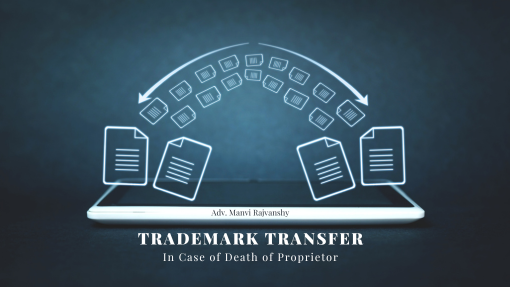In the event of the death of a trademark proprietor, the process of transferring the trademark becomes crucial. Understanding the legal procedures involved is essential for ensuring a smooth transition. In this guide, we will delve into the steps and considerations involved in the transfer of a trademark following the death of the proprietor.
- Step I : Understanding the Basics
When a trademark proprietor passes away, the trademark does not automatically pass on to their heirs. Instead, it becomes part of the deceased’s estate. The transfer of a trademark involves legal procedures to transfer the ownership from the deceased to the rightful heir or another entity.
- Step II Identifying the Rightful Heir
Before initiating the transfer process, it is essential to identify the rightful heir. The heir is determined by the laws of inheritance in the jurisdiction where the trademark is registered or as per personal laws. Typically, this will be outlined in the deceased’s will. If there is no will, the laws of intestate succession will apply viz succession certificate of survivorship certificate as the case may be.
- Step 3: Initiating the Transfer Process
Once the rightful heir is identified, the transfer process can be initiated. if there are multiple heir NOC (No objection Certificate should be obtained in favour of one as per mutual understanding) The following steps outline the transfer procedure:
- Step 4: Gathering Required Documents
The first step in the transfer process is to gather all necessary documents. The required documents may include:
- Death certificate of the trademark proprietor.
- Proof of the rightful heir’s identity.
- Copy of the will, if available.
- General Power of attorney (GPA )from the rightful heir.
- Any other documents required by the trademark office or legal authorities. (Consult a Trademark Attorney)
- Step 5: Filing an Application for Transfer
The next step is to file an application for the transfer of the trademark TM-P. The application should be submitted to the appropriate authority, which is usually the trademark office where the trademark is registered.(These days it is online) The application should include:
- Details of the deceased proprietor.
- Details of the rightful heir.
- Copy of the death certificate.
- Any other required documents. (Consult a Trademark Attorney)
- Step 6: Publication of Notice
After receiving the application, the trademark office will publish a notice of the proposed transfer. This allows interested parties to object to the transfer if they have valid reasons to do so. The notice is usually published in the official gazette or a local newspaper. (Consult a Trademark Attorney)
- Step 7: Objection Period
Following the publication of the notice, there is a specified objection period, typically 3-4 months, during which interested parties can raise objections to the transfer. If there are no objections or if the objections are successfully resolved, the transfer can proceed.
- Step 8: Issuance of Transfer Certificate
Upon successful completion of the objection period, the trademark office will issue a transfer certificate in the name of the rightful heir. This certificate serves as legal proof of the transfer of ownership of the trademark.
- Step 9: Updating the Register
The final step is to update the trademark register to reflect the new ownership. This involves recording the transfer of the trademark in the official register of trademarks. Once this step is completed, the transfer process is finalized.
Conclusion
The transfer of a trademark following the death of a proprietor involves several legal procedures. By following the steps outlined in this guide, you can ensure a smooth and seamless transfer process. It is important to adhere to the legal requirements and timelines to avoid any complications. If you need assistance with the transfer process, it is advisable to seek guidance from a qualified legal professional specializing in intellectual property law.
